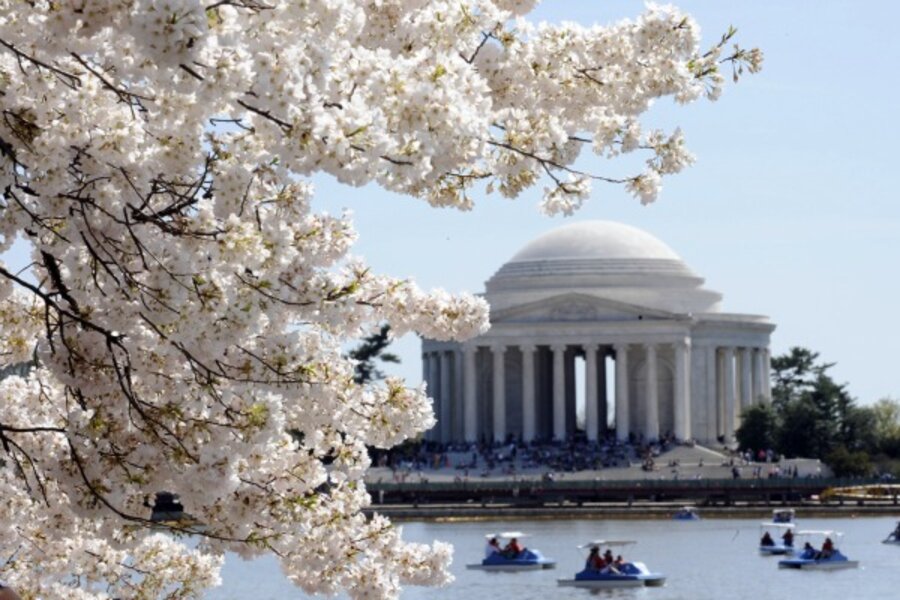Cherry blossom festival 2011: a time to reflect on Japan
Loading...
| Washington
As Japan struggles to recover from earthquake and tsunami this spring, those of us who live or work in Washington might honor that effort by walking down to the Tidal Basin for quiet reflection amid one of the city’s great cultural icons: the Japanese cherry trees.
Yes, hard as it is to believe after a tough winter, it’s almost cherry blossom time. They’re predicting peak bloom for the trees beginning about March 29. You never know with cherry blossoms, though – they’re fickle. Maybe they’ll show up at the predicted time, and maybe they won’t. That’s part of the reason they’re supposed to symbolize the beauty and fragility of life.
Many Americans know that the cherry trees were a gift from the people of Japan to the people of America sent early in the 20th century. But here’s something we bet many Americans aren’t aware of: The original shipment of trees was burned.
Those 2,000 plants arrived in Washington on Jan. 6, 1910. To everyone’s horror, Department of Agriculture inspectors discovered the trees were rife with insects and disease. President William Taft ordered them destroyed on Jan. 28.
The secretary of State conveyed the great regret of the United States to the Japanese ambassador in an official communiqué. Undismayed, the Japanese began preparing another batch of trees for shipment. These arrived on March 26, 1912. The first two were planted in a ceremony attended by first lady Helen Taft one day later.
Fast forward to 1952. Japan has been ravaged by the Second World War. As part of the rebuilding effort, Japanese officials want to renew the famed Arakawa River grove of cherry trees in Tokyo, which has fallen into decline.
The US, victor in the war, responds with arboreal aid for its recent enemy. Bud wood is harvested from the trees surrounding the Tidal Basin and sent to Japan, to replenish the original grove.
Two years later, Japan sends Washington a gift of a 300-year-old stone lantern, made of granite and about eight feet high. That stands today near the site where Mrs. Taft planted the city’s first cherry tree.





